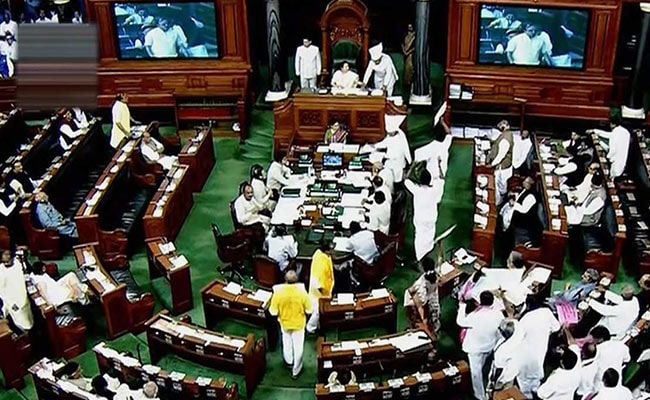
After storming out of the BJP-led alliance today, Andhra Pradesh Chief Minister and Telugu Desam Party (TDP) chief said it would ask for a no-confidence vote against the government in parliament, competing with rival Jaganmohan Reddy's YSR Congress, which had submitted the notice yesterday. The two no-confidence motions, with their target audience back in Andhra Pradesh ahead of polls next year, do not endanger the government, which has enough numbers in the Lok Sabha. But how does it work?
Here is a five-point guide to understand the process:
In Lok Sabha, a trust vote is usually sought during the debut session of the new government. This is done to understand whether a party or a coalition commands a majority in the House. Vote of trust can also be optimised at any time during the five-year tenure of the House if it appears that the ruling party has lost its majority or for some reasons the support base of the Prime Minister (PM) has depleted due to the exit of any of the coalition partners. The process of trust vote is initiated by the prime minister by moving a resolution seeking support for his government.
A no-confidence motion is moved in the Lok Sabha against the entire council of ministers, saying that they are no longer deemed fit to hold positions of responsibility due to their inadequacy in some respect or their failure to carry out their obligations.
Once the Lok Sabha speaker is convinced that motion is in order, the floor leader of the party is asked if the party is pressing admission of its motion. At least 50 lawmakers, which is the minimum requirement, would need to stand up and support the move. If there are 50 lawmakers in favour, the motion is admitted and the speaker allots a date for discussion on the motion. The prime minister or ministers reply to the charges made. The mover has the right to reply. After the debate, the speaker puts question to the house and ascertains the decision of the house by voice vote or a division.
The government is expected to resign if it loses a trust vote. In case its refuses to do so, the President has the power to remove the prime minister. In the history of Indian Parliament, no Prime Minister has been forcibly removed so far. After a government loses a trust vote and resigns, it continues to function, but as a caretaker government with almost the same powers as it had before the voting.
However, a caretaker government wouldn't have the power to take any major policy decisions since Parliament remains dissolved. A new government gets elected after the general elections.

